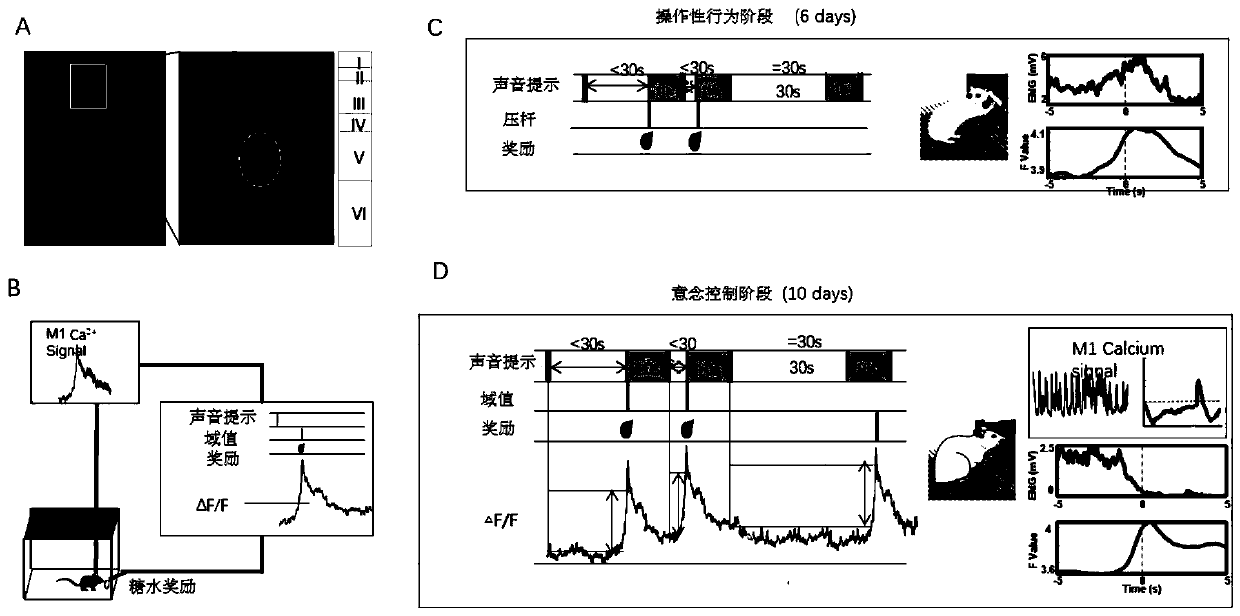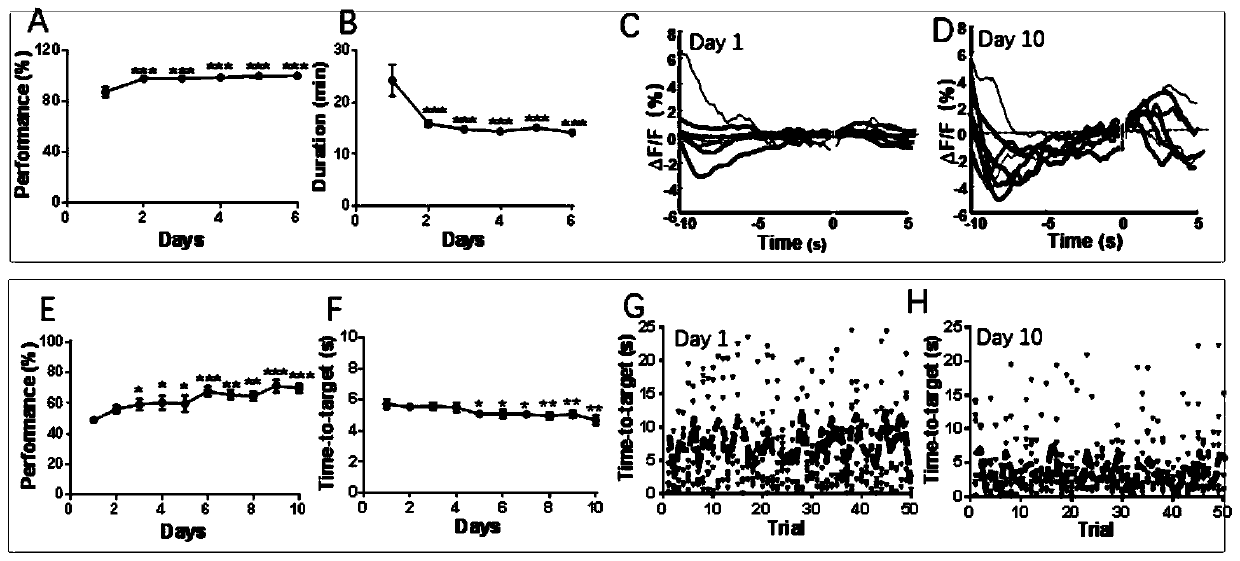New application of adenosine A2A receptor antagonist drug
A receptor antagonist, adenosine technology, used in drug combinations, medical preparations containing active ingredients, pharmaceutical formulas, etc., can solve the problems of unclear neural circuits and unclear learning, reduce completion time, improve success rate effect
- Summary
- Abstract
- Description
- Claims
- Application Information
AI Technical Summary
Problems solved by technology
Method used
Image
Examples
Embodiment 1
[0019] Example 1 Constructing a Brain-Computer Interface Behavioral Model Using the Calcium Signal of M1 Cortical Neuron Population Cells in Mice
[0020] Brain-computer interfaces can help paralyzed patients recover their motor functions, and the construction of behavioral models of brain-computer interfaces (neuroprosthetics) is the core of adapting to brain-computer interfaces. In this example, the calcium signal of neurons in the mouse M1 cortical population was used as a "controller" to construct a brain-computer interface behavioral model in freely moving mice ( image 3 A-D), the specific method is:
[0021] First, AAV9-syn-GCaMP6f-WPRE-SV40 (AAV virus) was used to express genetically encoded Ca in mouse M1 cortical neurons. 2+ indicator GCaMP6f, and insert the fiber at the site of virus injection. It was demonstrated that GCaMP6f is selectively expressed in L4-6 layer (L4 / L5 / L6) neurons of the cortex and co-expressed with the neuronal marker NeuN, but not with the mi...
Embodiment 2
[0042] In this example, in the stage of operant behavior and idea control stage of constructing the behavioral model of brain-computer interface, adenosine A was intraperitoneally injected into the mice participating in the training. 2A The receptor antagonist KW6002 (5mg / kg) was injected half an hour before training, once a day.
[0043] The results showed that in the stage of operant behavior, the success rate of mice obtaining sugar water was not significantly different from that of the five-day training except that it increased significantly on the first day ( Figure 4 A; two-way ANOVA, P Figure 4 B). In the stage of mind control, the success rate of mice obtaining sugar water increased ( Figure 4 C; two-way ANOVA, P Figure 4 D).
Embodiment 3
[0045] In this example, adenosine A was injected intraperitoneally into the trained mice only during the mind control stage of constructing the behavioral model of the brain-computer interface. 2A The receptor antagonist KW6002 (5mg / kg) was injected half an hour before training, once a day.
[0046] The results showed that: in the stage of mind control, the success rate of mice obtaining sugar water increased. Compared with the results of Example 2, it was found that whether KW6002 was injected in the stage of operant behavior did not affect the success rate of training in the stage of mind control. The success rate of training is only related to whether KW6002 is injected in the stage of mind control ( Figure 4 E, two-way-ANOVA, P Figure 4 F).
PUM
 Login to View More
Login to View More Abstract
Description
Claims
Application Information
 Login to View More
Login to View More - R&D
- Intellectual Property
- Life Sciences
- Materials
- Tech Scout
- Unparalleled Data Quality
- Higher Quality Content
- 60% Fewer Hallucinations
Browse by: Latest US Patents, China's latest patents, Technical Efficacy Thesaurus, Application Domain, Technology Topic, Popular Technical Reports.
© 2025 PatSnap. All rights reserved.Legal|Privacy policy|Modern Slavery Act Transparency Statement|Sitemap|About US| Contact US: help@patsnap.com



